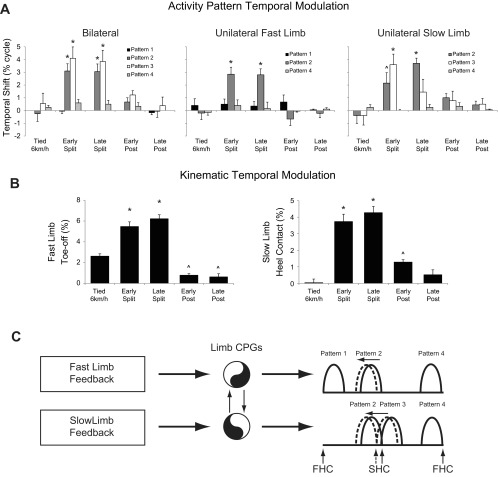Fig. 7.
Temporal modulation of variables for different treadmill conditions. Modulation of temporal patterns is shown in A, with a positive magnitude indicating a temporal shift to earlier in the gait cycle. In the unilateral plots, only the patterns that were consistent between participants are shown. B shows the temporal modulation of fast limb toe-off (left) and slow limb heel contact (right) for the differing conditions. A value of “0” in these plots indicates no difference compared with the 4 km/h condition. Positive values indicate the event is occurring earlier in the gait cycle. In A and B, significant differences (P < 0.05) from all tied-belt conditions are indicated with an asterisk, and differences (P < 0.05) from only the 6 km/h tied-belt condition are indicated with a caret. A proposed mechanism of central pattern generator (CPG) control is shown in C. Here, proprioceptive feedback is obtained from the fast and slow limbs, which is sent to limb CPGs. A tight coupling between each of the CPGs produces a coordinated output whereby shifting of individualized limb temporal patterns occurs simultaneously. Fast (FHC) and slow (SCH) limb heel contact are annotated, and pattern locations during tied (solid) and split-belt (dotted) conditions are shown.

